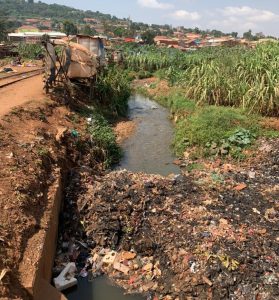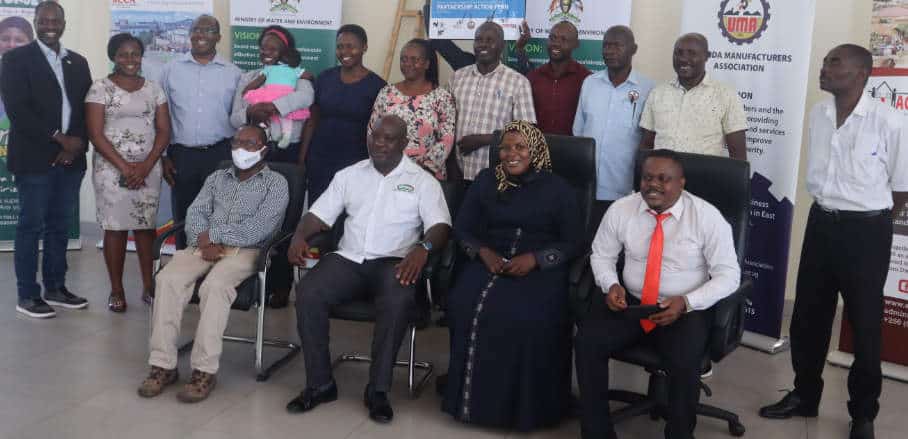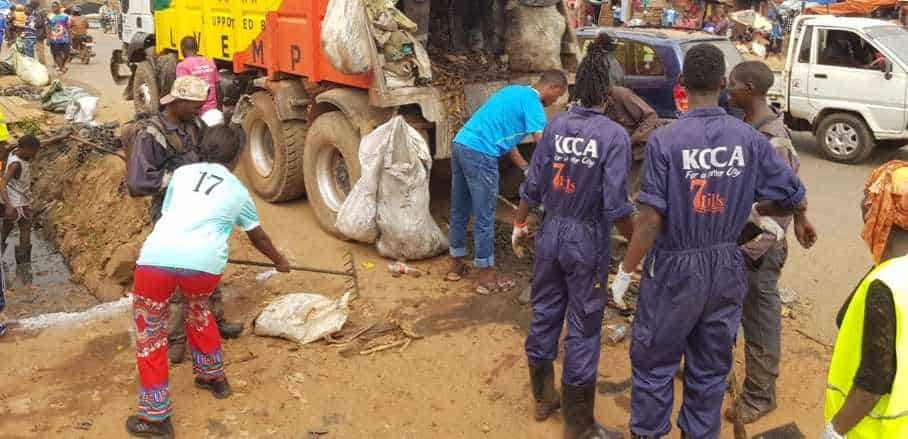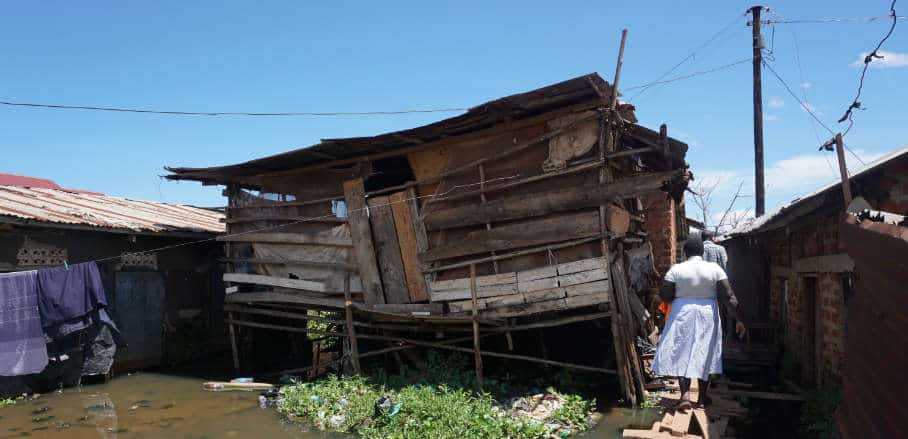Collective Action for Flood Resilience: How Blue-Green Infrastructure Leads to New Solutions in Kampala
Effective flood control can only be met with a holistic approach. Peter Mwambu and Simon Akena invite us to Kampala in Uganda and discuss lessons learned from integrating Blue-Green Infrastructure.
Urban flooding is a global challenge, and for a long time, predominantly engineering drainage works have been adopted as a solution to city floods. However, with climate change accelerating, cities need to transition towards socially inclusive and climate-adaptable flood solutions for prosperous green economies and resilient communities. Holistic and effective flood control in cities necessitates the adoption of integrated measures, such as the use of Blue-Green Infrastructure (BGI).
Blue-Green Infrastructure (BGI) is a strategically planned network of natural and semi-natural areas, ranging in size from rain gardens right up to green streets, that are designed and managed to deliver a wide range of environmental, economic, and social benefits including improved water quality. However, can this transition effectively be achieved through current silo stakeholder action-based approaches? We discuss lessons learned from the promotion of BGI solutions under the Greater Kampala Integrated Flood Resilience Stewardship Partnership as a cross-sectoral collective action pathway to achieving this transition in Uganda.
Kampala’s Flooding Challenge: A Product of Insufficient Solo Efforts
It comes as no surprise that when industrial areas and communities get flooded, there are socioeconomic losses resulting from damaged assets and goods as well as the disruption of business operations, and worse still the loss of life.

Waste clogging drainage channels across Kampala increase the risk for destructive flooding during rain © GIZ/Vanessa Tyaba
In Kampala, for example, approximately 10 per cent of the city’s jobs are at risk because of their location in flood-prone areas. Flood-attributed losses can be reduced through engineering drainage works – to some extent. However, if significant city resilience is to be achieved, a combination of BGI solutions, as well as collective awareness of flooding, is critical.
Kampala is one of Africa’s fastest-growing cities and flash floods represent one of its major challenges. This is due to rapid urban development, which has resulted in an increase in impervious surfaces in ecologically sensitive areas such as wetlands, leading to increased run-off and decreased infiltration of water. With the city’s flash flood challenge at hand, different stakeholders – such as public, private, and civil society – continue to work independently in their fight against floods. Yet it takes two to tangle, and the lack of cross-sectoral collaboration has limited the collective development of sustainable flood solutions.
Collective Action for Transitioning to BGI solutions is the Key
Kampala requires an integrated approach to managing the flood challenge. BGI flood solutions include among many the use of urban green spaces, bioswales, and rainwater harvesting systems. These solutions are cost-effective, scalable, and provide a wide range of ecosystem benefits.
However, BGI solutions are inefficient in impact if not jointly developed by the public sector, private sector, and communities. For instance, BGI measures like the establishment of an urban forest would require having a flood management strategy presenting different collectively implemented pathways. Recognising this need, various stakeholders in Kampala decided to join forces and collaborate under the Greater Kampala Integrated Flood Resilience (GKIFR) Stewardship Partnership.

Stakeholders from the public and private sector and civil society have joined forces under the Greater Kampala Integrated Flood Resilience Partnership. © GIZ/ Ebong Willy Bunga
Under the stewardship concept of cross-sectoral collective action to address joint risks, actors from the different sectors collaborate on an eye level to jointly decide, develop, and implement BGI flood solutions in the selected priority flood hotspots of Kinawataka and Nalukolongo. The partnership’s overall aim is to collectively encourage investments in BGI flood solutions to enhance flood resilience in Kampala and foster socioeconomic development by minimising flood-related losses.
The GKIFR partnership brings together the Ministry of Water and Environment and Kampala Capital City Authority – which has an overarching mandate in flood control – from the public sector, the Uganda Manufacturers Association and food retailer Britannia Allied Industries from the private sector, and ACtogether Uganda. The latter is a civil society organisation working to create socio-economic resilience in Kampala’s informal settlements. This partnership is supported by GIZ’s Natural Resources Stewardship Programme.
Lessons learned from the GKIFR Partnership
The Partnership provided a foundation for institutional collaboration to joint flood solutions and laid the groundwork for scaling up BGI solutions for flood resilience in Kampala. For example, the partners jointly developed a Partnership Action Plan (PAP) with institutional-specific actions incorporated into their respective implementation plans. Hence, efforts are not made twice, and the coordination of actions is improved.
Through the partnership, private companies in Kampala have committed to investing in BGI flood solutions at their facility or even pledged to lead the charge in encouraging private companies to invest in BGI. This shows that private sector players in Kampala are willing to invest in on-site BGI solutions if motivated by their cost-benefit efficiencies.
Transforming Cities into High-Quality Living Spaces
Communities in flood hotspots have embraced practical flood control good practices. Through the GKIFR partnership’s “Community Action for Flood Resilience,” project in the informal settlements of Kinawataka and Nalukolongo in Kampala, ten community flood control champions were trained in flood control measures to raise awareness.
Through these awareness campaigns, the communities started monthly clean-up activities to desilt secondary drainage channels in their localities because waste often blocks such channels in their areas, increasing the risk of destructive flooding when it rains. The communities have also organised themselves to voice their collective concerns to city authorities and collaborate with them to control floods, for example, by mobilising garbage trucks for their clean-ups.

Community members alongside Kampala Capital City Authority’s (KCCA) Weyonje team collecting solid waste in Kinawataka and Nalukulongo. Improving waste management and desilting channels from waste and silt decreases the risk of destructive floods when it rains. © GIZ/Ebong Willy Bunga
Only by acting collectively across sectors, barriers to effectively tackling the flooding challenges in Kampala can be overcome. Stewardship partnerships like the Greater Kampala Integrated Flood Resilience Partnership can leverage each sector’s strength and jointly create more inclusive and long-lasting solutions for urban flooding. This is necessary to reach a just transition and transform cities into climate-resilient, high-quality living spaces.
